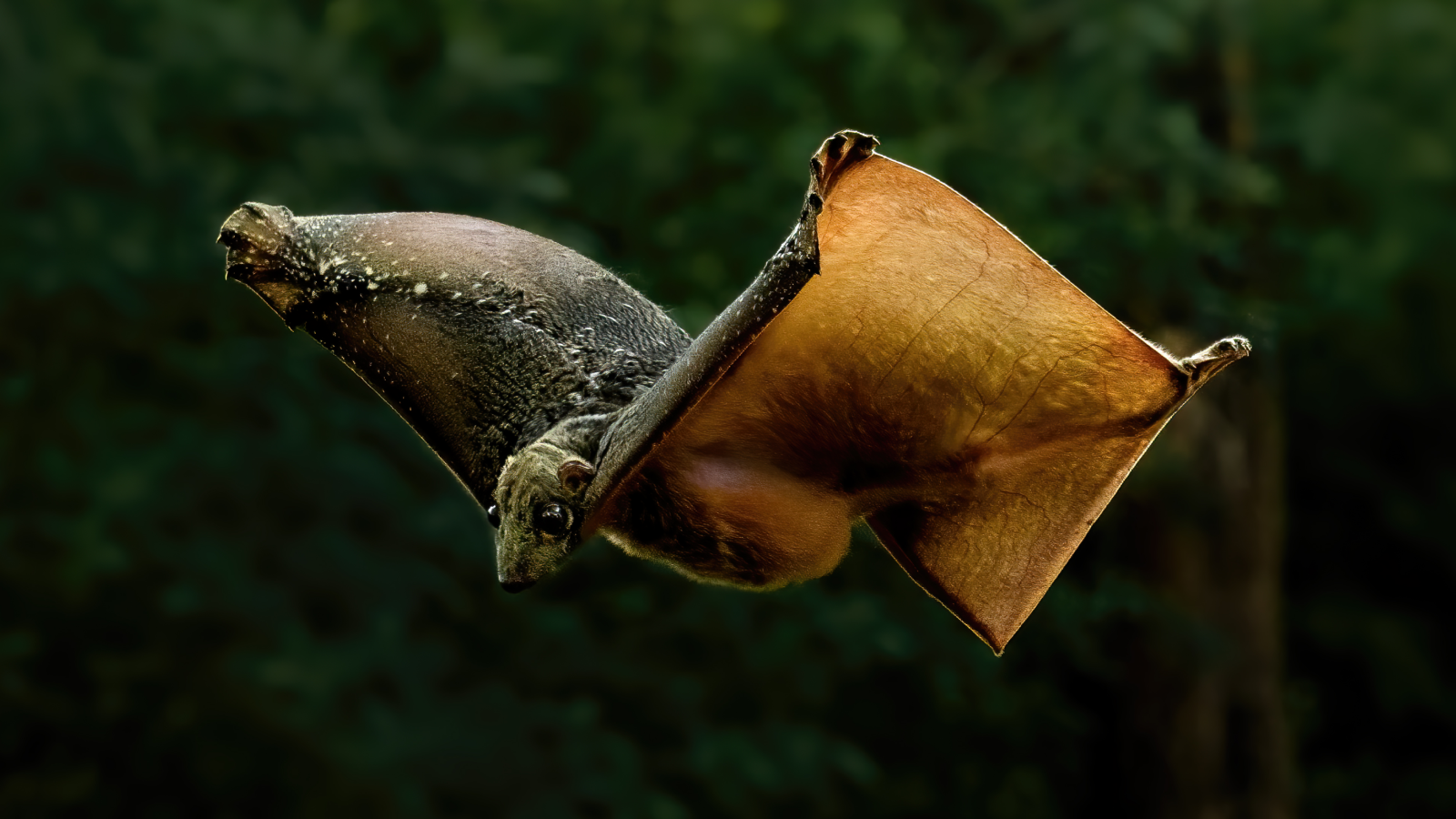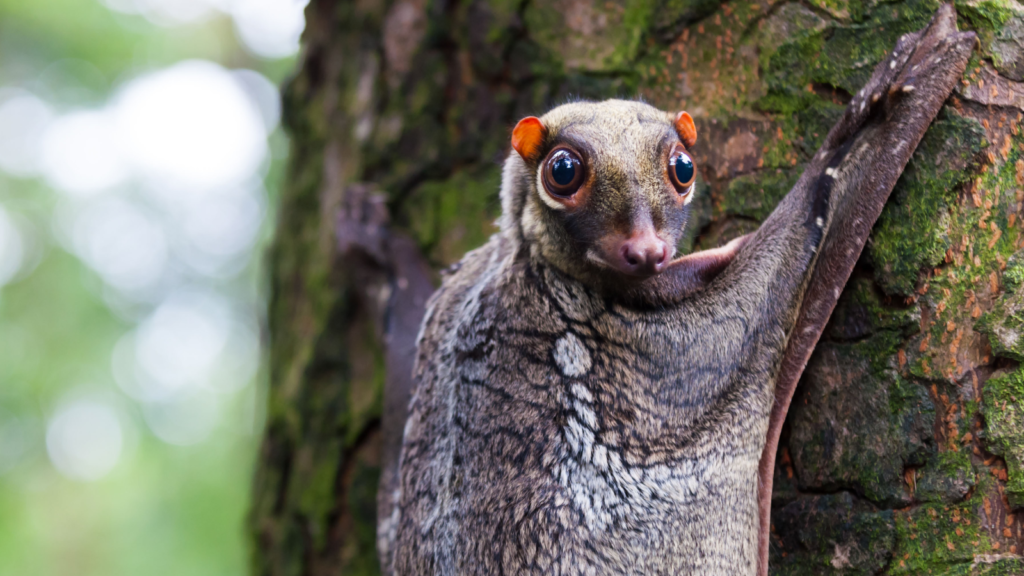QUICK FACTS
Name: Colugo, or Sunda flying lemur (Galeopterus variegatus). Also known as the Malayan flying lemur
Where it lives: Tropical rainforests in Southeast Asia
What it eats: Flowers, buds, shoots, leaves, sap and nectar
Why it’s awesome: Colugos are commonly called “flying lemurs,” but the name is misleading. These nocturnal mammals look somewhat like lemurs, with small, furry faces that are dominated by a pair of enormous forward-facing eyes. However, colugos aren’t lemurs, which are part of the Primates order. Rather, colugos are the sole members of the order Dermoptera, and are the closest living relatives of modern primates.
Colugos also don’t fly, exactly. Unlike bats — the only mammals capable of powered flight — colugos do not have wings. Instead, they have a furry membrane called a patagium that is only suitable for gliding.
This thin sail is made of skin stretching from the animal’s neck to its fingers, and from its fingers to its toes and tail. When fully extended, their “wingspan” is about 28 inches (70 centimeters) wide, and the animal resembles a living kite. Their feet are webbed, with curved claws for gripping tree bark.
Colugos are entirely arboreal, spending all their time in the treetops, where they launch into a glide by leaping from branches. They sail over distances greater than 328 feet (100 meters) while losing very little altitude, gliding at speeds of about 22 miles per hour (35 kilometers per hour). A female colugo with young will glide with her offspring clinging to her belly.
Sunda flying lemurs are slightly larger than the only other species of flying lemur: Cynocephalus volans, found in the southern parts of the Philippines.

The body of the Sunda species measures up to 16.5 inches (42 centimeters) long; their tails are up to 10.6 inches (27 cm) long, and they weigh up to 4.5 pounds (0.9 to 2 kilograms). Their dense fur can be black, grey, red or white, with dark, mottled patterns on their backs that resemble the lichen on rainforest trees. This camouflage hides colugos from predators.
The bottom incisors of colugos are also unique — they are comb-shaped with up to 20 prongs per tooth, and they help with grooming and removing parasites from colugos’ fur. Colugos may also use these unusual teeth to strain fluids from fruit, or to scrape up sap from plants.
